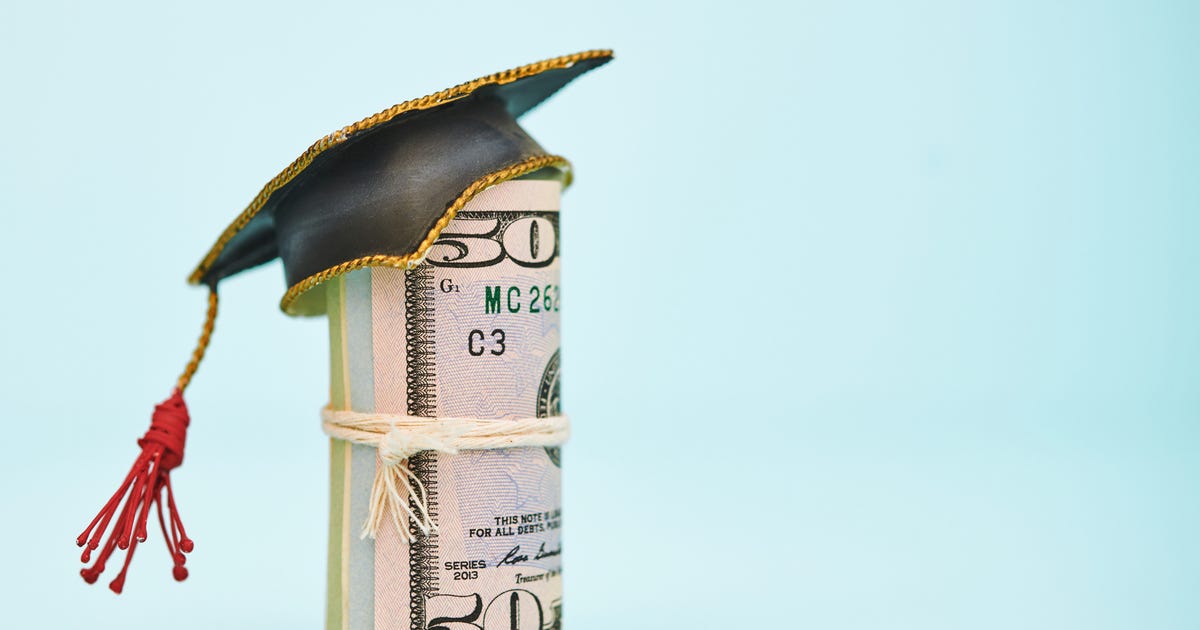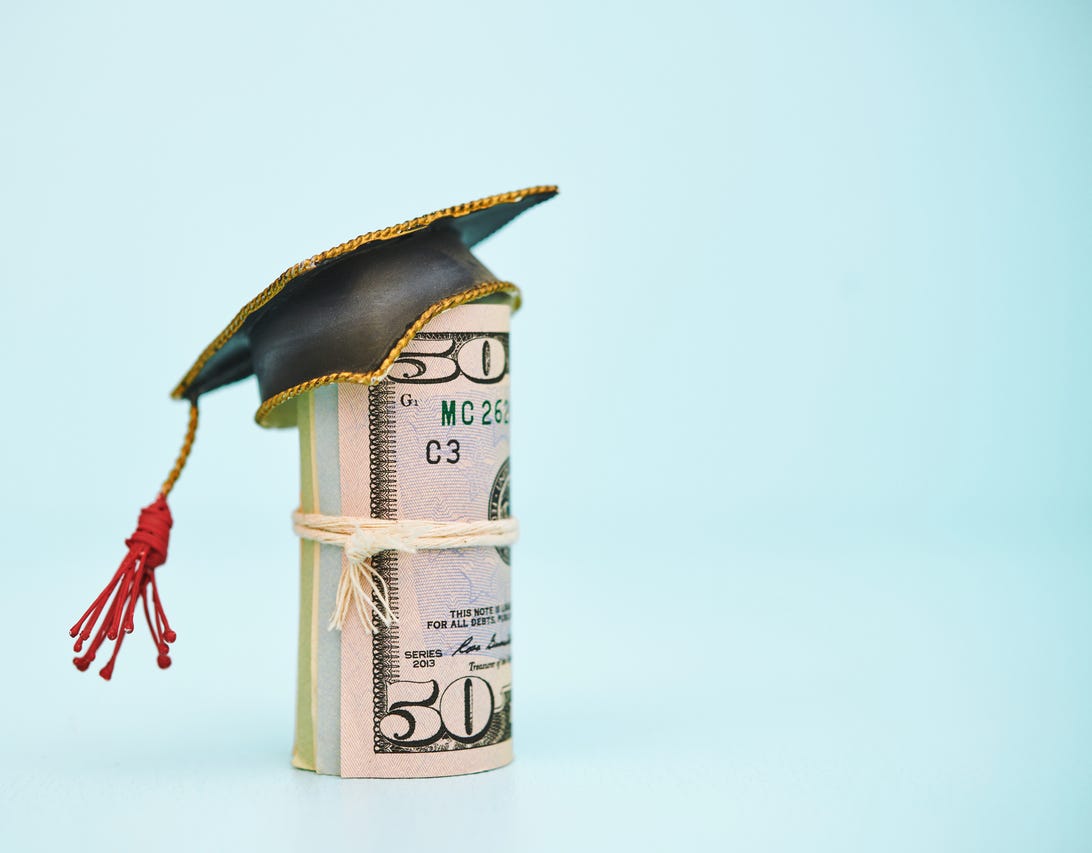

Getty Images
While it may not have fulfilled all of the promises made on the campaign trail, President Joe Biden’s administration has made some progress on student loan forgiveness.
Last month, the US Department of Education announced that it had identified 100,000 borrowers who were eligible for Public Service Loan Forgiveness under the new waiver. Since revamping its PSLF program last October, 70,000 borrowers have had a combined $5 billion in student loans forgiven, as of this January. Approximately 30,000 more have been deemed eligible for loan forgiveness.
Eligible borrowers will be notified on a rolling basis, a spokesperson from the Department of Education confirmed. The initiative to help these borrowers qualify for student loan debt forgiveness began in October of last year when changes were made to the PSLF program to offer more debt relief to a greater number of Americans.
“Borrowers who devote a decade of their lives to public service should be able to rely on the promise of Public Service Loan Forgiveness. The system has not delivered on that promise to date, but that is about to change for many borrowers who have served their communities and their country,” US Secretary of Education Miguel Cardona said in a statement at that time.
In addition to the expanded PSLF waiver, the federal student loan payment pause has also been extended through Aug. 31. Federal student loan payments have been on hold for more than two years now.
Are you now eligible for this expanded student loan forgiveness program? And if you are, how do you apply? Here’s everything you need to know about the PSLF.
What changes have been made to the PSLF program?
The PSLF program, first launched in 2007, was designed to help public servants pay off their loans faster. The program works by offering loan forgiveness to eligible public servants who have made 120 qualifying student loan payments. Yet almost 99% of borrowers who have applied since 2008 have been denied prior to the October expansion.
Under the new Limited PSF Waiver program, the Department of Education is making it easier for borrowers to enroll and receive program benefits. This includes making it simpler to identify and address potential errors made by their loan servicers — and expanding the types of loans that will now be eligible for forgiveness. Another focus will be on enhancing benefits for those in the military, including converting time spent on active duty into a loan repayment, the department said.
Some restrictions are being temporarily relaxed, offering new categories of borrowers an opportunity to qualify for forgiveness through loan consolidation. Previously only federal Direct Loans qualified for PSLF. Now, other federal loans such as FFEL, federally backed loans made through private lenders, Perkins loans and those with nonstandard or non-income-driven repayment plans may qualify. (Note: The waiver only applies to federal loans — though those make up the vast majority of student loan debt, accounting for more than 90% of the total.)
Borrowers can also receive credit for previous payments and periods of employment, such as active military duty, that they wouldn’t have qualified for in the past.
The limited waiver gives borrowers a full year to apply for the PSLF program under its new terms and greatly expands eligibility. Prior to last week’s announcement, there were limited options to appeal the denial of a PSLF application, and only 5% of people who applied for PSLF ever received debt forgiveness.
Who is eligible for PSLF?
To qualify for PSLF you must be employed full-time by a US federal, state, local or tribal government agency — this includes the military — or a nonprofit organization. You must have direct loans or other types of federally backed loans that have already been consolidated into direct loans, and you must make 120 qualifying payments (10 years’ worth of payments). Examples of borrowers who qualify for PSLF are workers like teachers, nurses and firefighters who serve their local communities.
Who qualifies for student debt forgiveness under the new PSLF terms?
The PSLF expanded eligibility for borrowers in the sense that more types of loans and payment plans qualify for forgiveness than ever before, but the borrowers who can apply are still limited to public sector workers. So more than 550,000 borrowers who already qualify for PSLF may now qualify for additional forgiveness. There are a few specific ways to meet the requirements and check if you’re eligible.
The easiest way to figure out if you qualify is to apply for the limited waiver. Filling out the waiver will help you do things like consolidate different types of loans or certify previous periods of employment for credit.
And even if you suspended your monthly student loan payments during the pandemic, you still qualify for additional PSLF relief. In fact, each paused payment still counts as a qualifying payment toward your goal. So, if your payments were paused for 22 months, that counts as 22 on-time payments.
How can I apply for PSLF forgiveness?
The Department of Education has a dedicated tool to help guide your application for the limited waiver. The deadline to apply for the waiver is Oct. 31, 2022, but the sooner you apply, the better. Some borrowers may not have to take any action to have their loans canceled — but it’s a good idea to confirm your specific details.
What if I did not receive credit for past payments?
In the past, if you had been making payments but your loan servicer had incomplete or inaccurate records, you had almost no recourse to counter their claims. Now, with the limited waiver, you can apply for forgiveness and have your payments counted toward your debt and forgiveness.
Which loans qualify for PSLF?
Previously, only Direct Loans with a standard or income-driven repayment plan qualified for PSLF. However, for a limited time, you may be able to receive credit for past payments on federal loans that did not previously qualify for PSLF, regardless of your repayment plan. Borrowers with FFEL, Perkins and other federal loans may need to consolidate their loans through the Direct consolidation program before Oct. 31, 2022.
What other policy changes should I know about?
The Department of Education said in its statement that it will continue to roll out and update its policies in the coming months as it attempts to get the PSLF program back on track.
Correction, Jan. 25: This article previously stated that private loans would be eligible for student loan forgiveness under the new waiver. That was incorrect. In addition to Direct Loans, only FFEL loans — which are federally backed, but often issued by private lenders — Perkins Loans and other federal loans may qualify for the PSLF waiver.